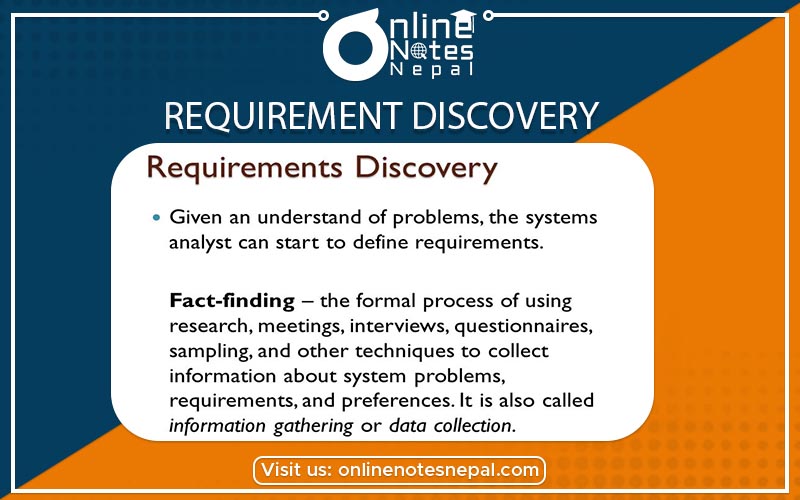Published by: Nuru
Published date: 16 Jun 2021

Requirements discovery is the process and techniques used by systems analysts to identify or extract system problems and solution requirements from the user community. In other words, Requirement Discovery is a stage in an engineering project where an analyst or developer tries to find out (discover) as much as they can about the requirements for the particular project. The term is mostly used in Software Development projects. Depending on the methodology used, Requirement Discovery can be a separate stage or an ongoing activity.
System requirements
System requirement is something that the information system must do or property that it must have. Also called a business requirement. System Requirements to be used efficiently, all computer software needs certain hardware components or other software resources to be present on a computer.
Functional Requirements
A Functional Requirement is a description of the service that the software must offer. It describes a software system or its component. A function is nothing but inputs to the software system, its behavior, and outputs. For Examples,
Non-Functional Requirements
A non-functional requirement is a requirement that specifies criteria that can be used to judge the operation of a system, rather than specific behaviors. They are contrasted with functional requirements that define specific behavior or functions. The plan for implementing functional requirements is detailed in the system design. For Example,
Results of Incorrect Requirements
Criteria For System Requirements